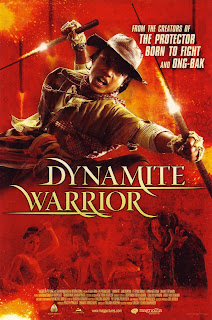
You might think it a bit of a stretch, to be talking about the release of some Popeye cartoons on a blog supposedly devoted to obscure -- even hidden -- cinema. But here’s the thing: while every tyke over the age of two can sing the Popeye-the-Sailor-Man theme, and we all know that spinach gives ya’ “musk-kles”, nonetheless most of us are acquainted with the one-eyed seaman from his later animated cartoons -- the reasonably well-crafted ones produced by A.A.P. and Paramount in the 40’s and 50’s, and the positively God-awful, made-for-TV shorts produced by King Features in the early 60’s (these frequently featured a character named the Sea-Hag -- they’re terrible -- please to avoid). But Popeye made his rep -- on the big screen at least -- through an early series of cartoons produced by the Fleischer Bros., Max & Dave; and only now, some 75 years after their creation, are they getting their due on home video.

Popeye first came to light as a character in the newspaper strip, Thimble Theater, created by E.C. Segar, one of the greats of comix art; and one of the great strips as well -- right up there with George Herriman’s Krazy Kat -- but that’s a subject for a whole ‘nother blog. In 1932, the immense popularity of Segar’s character attracted the attention of a successful producer of animated shorts: Max Fleischer. He already had a stable of popular characters: Betty Boop, KoKo the Clown, to name just two -- but was looking for a new cartoon “star” -- and the baleful, but well-meaning sailor seemed to fit the bill. And he did -- becoming, in his heyday, as popular as Mickey Mouse. The Fleischer Bros. produced about a hundred Popeye cartoons between 1933 and 1942; but then some bad business practices -- and the ruthless ones of competitor, Walt Disney -- caused the Fleischer Bros. to abandon their namesake company and go their separate ways. Dave to Columbia’s Screen Gems animation studio, and Max to a maker of commercial and educational shorts called Jam Handy. Neither produced anything thereafter that matched in appeal, popularity, -- and just plain sense of fun -- those hundred or so Popeye cartoons.

While Segar’s newspaper strip had a satirical edge to it that was, in part, responsible for its’ success, the appeal of the Fleischer shorts was much more basic. First off, the Fleischer animation style -- a rubbery, almost vibratory sense of motion was invested into every character -- into almost every object in the frame, actually. it’s quite unlike anything done by Disney or Warner Bros; or anybody else, for that matter. Secondly, the savvy integration of popular musical styles of the day -- a whole Betty Boop short was built around Cab Calloway’s hit tune Minnie The Moocher, for example. And finally, the character of Popeye himself -- he’s rough, he’s tough, he’s a little bit gruff... and more than a little bit awkward (just look at those forearms!); but he means well, so ya’ gotta’ love him. The same basic plot -- Popeye likes Olive/Olive fancies Bluto/Bluto behaves beastly/Popeye gives him his comeuppance (with the aid of some spinach!) -- propelled the narratives of nearly all the shorts in the series; but the panache and craftsmanship of the Fleischer Studios made almost all of them a pleasure to watch.

The Fleischer Bros. were every bit the innovators that Walt Disney was -- it was Max & Dave who produced the first sync-sound cartoons, not Disney as is sometimes erroneously attributed. And for these very same early sound shorts, they developed the “Bouncing Ball” method for following along with on-screen lyrics: a cinematic trope still popular... if only in Karaoke bars. The Fleischers also developed the process of rotoscoping, a technique still used by animators today -- albeit with a little computer-aided assistance -- in movies like Waking Life, and many others. And just so I don’t get accused of being a Disney-Basher (quite a popular sport out here in L.A., truth be told), I should mention that while as a businessman W.D. was quite ruthless, he was not vindictive; he later gave the job of directing Disney studios first -- and IMHO, best -- live action feature, 20,000 Leagues Under the Sea to Max’s son, Richard Fleischer.

The 4-DVD set of Popeye the Sailor: Vol. One, 1933 - 1938 comes out -- gobblin’ spinach and swingin’ its fisks' -- this Tuesday, July 31st. You can rent him here or buy him there; just don’t make fun of the poor fella’ -- after all, he is... what he is.
Some links:
The Fleischer Popeye Tribute Page.
The Internet Archive’s webpage where you can download literally dozens of Flesicher shorts -- for free!.
Some info. regarding the movie, Forbidden Zone -- a film very much inspired by the Fleischer Studio style.
Next post -- 08/03/07












